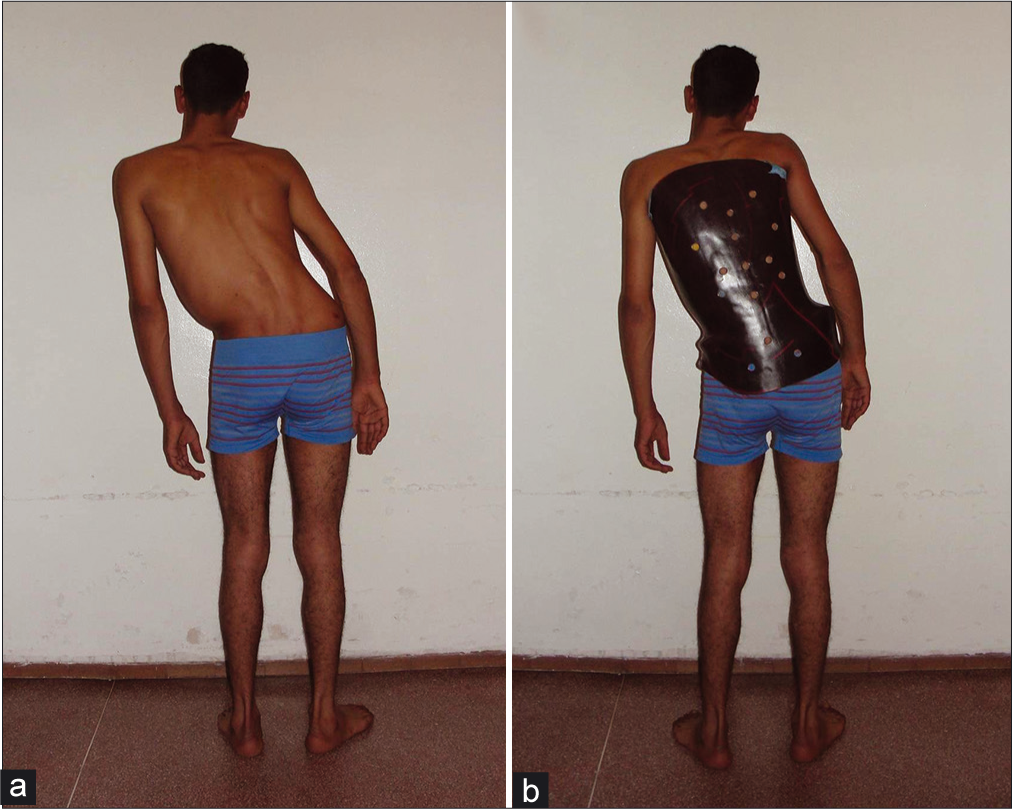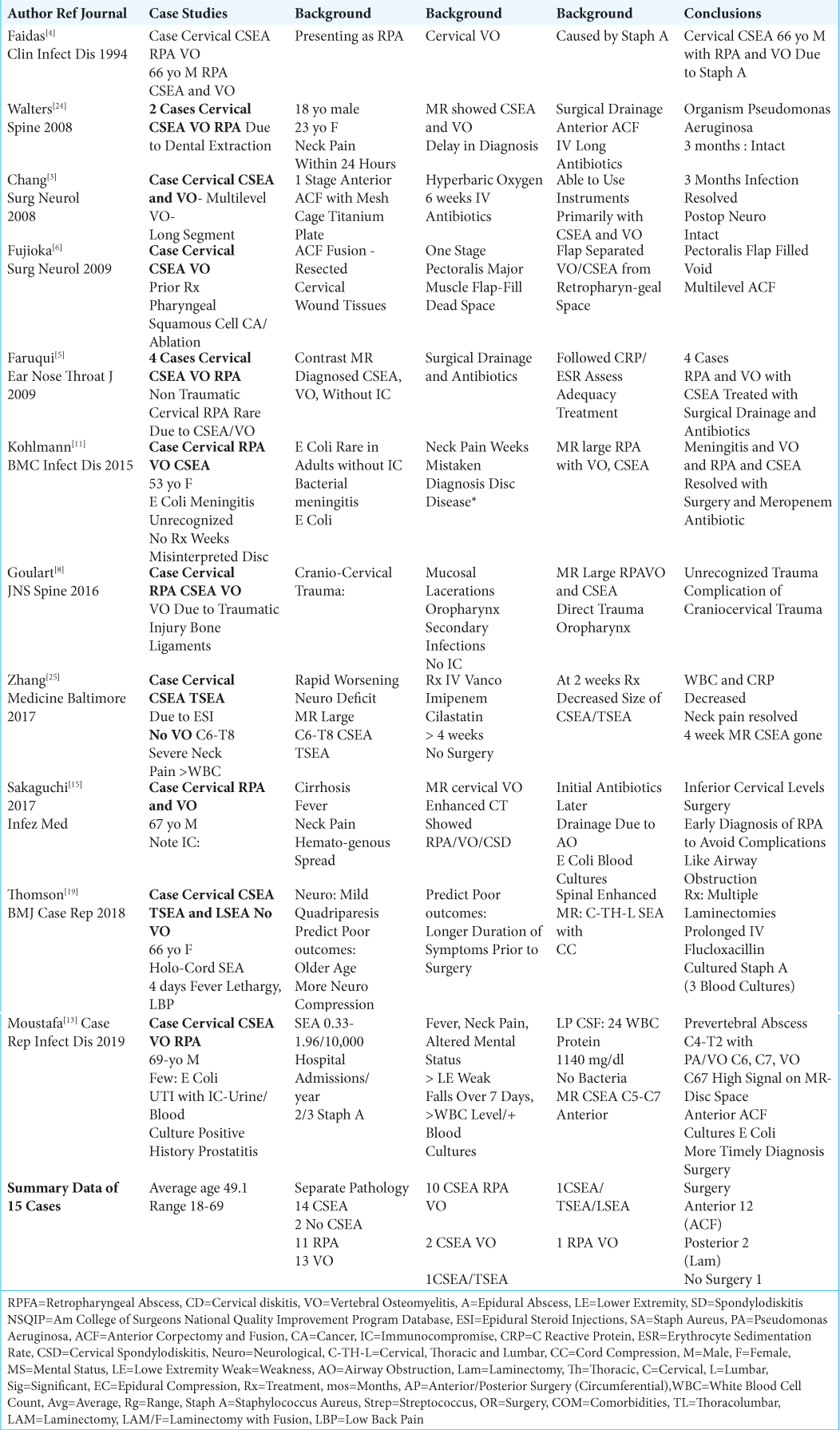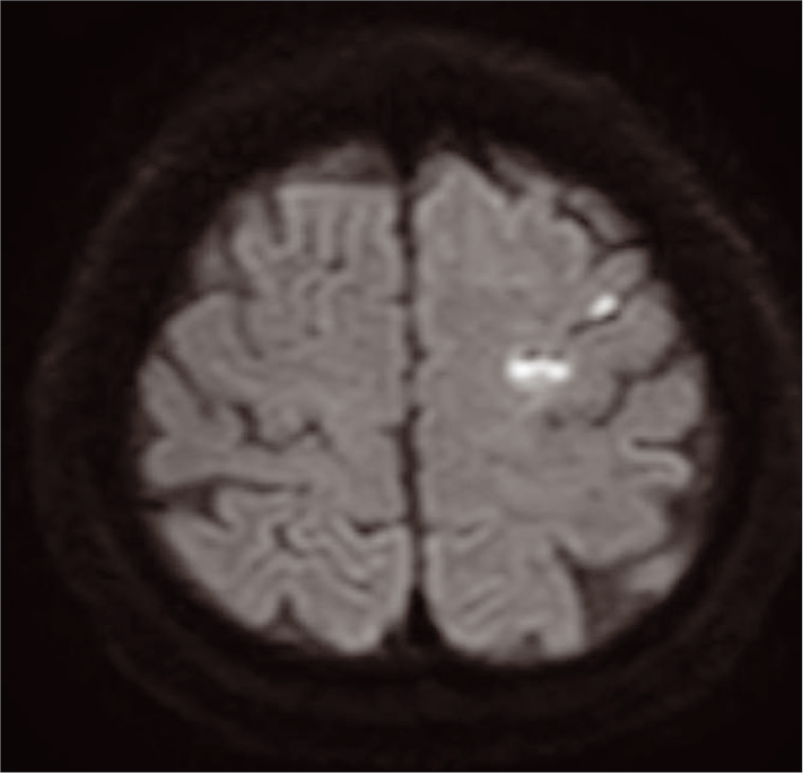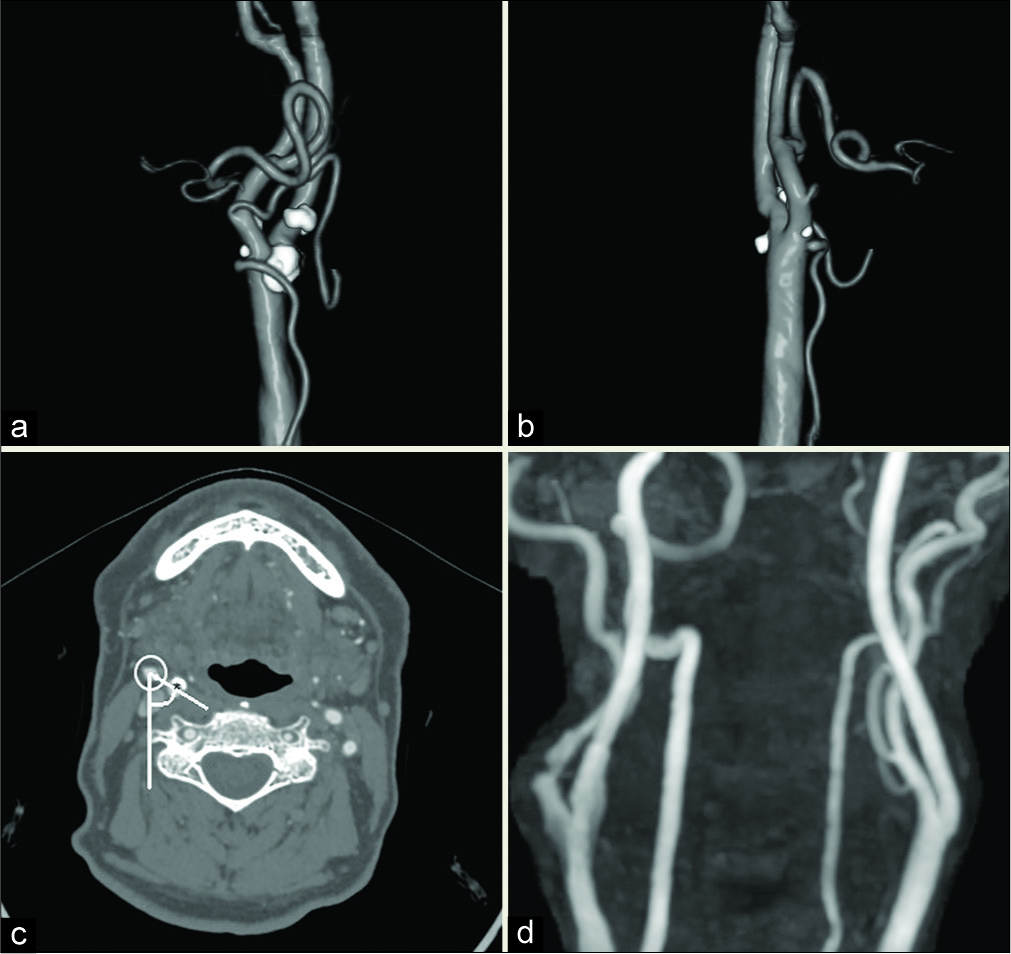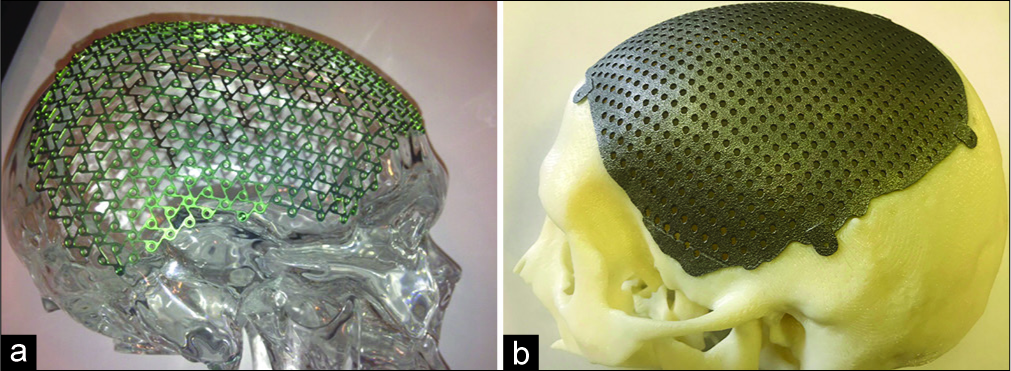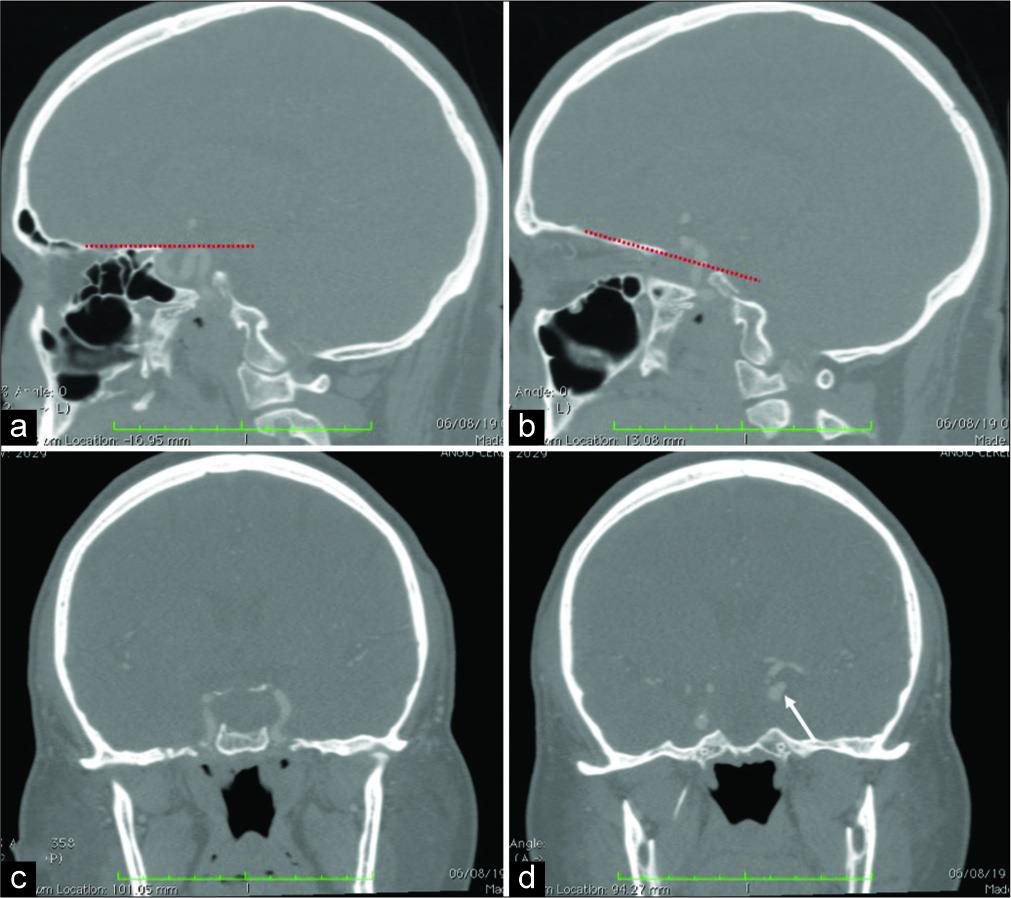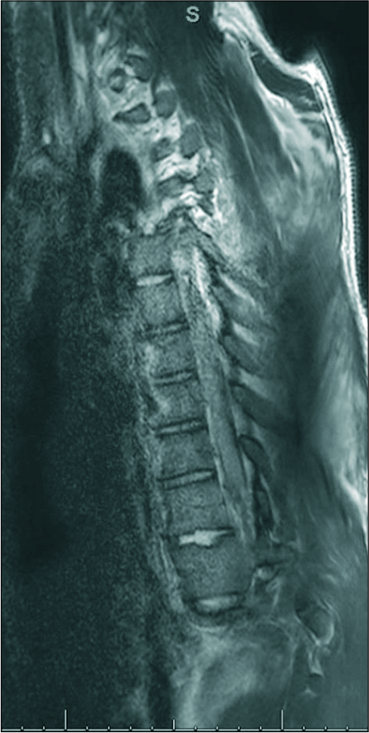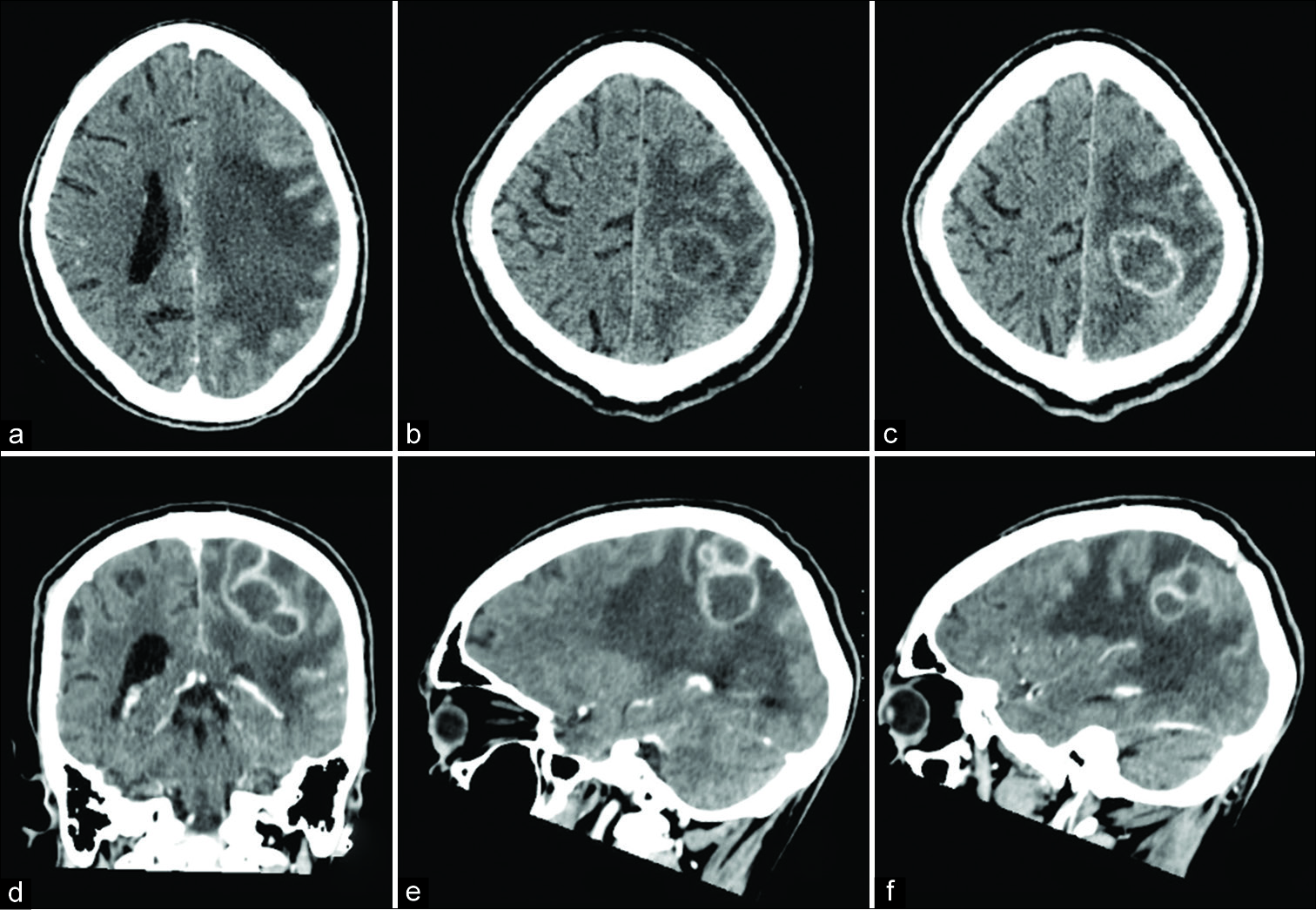Isolated painless scoliosis in lumbar disc herniation
Date of publication: 20-Jun-2020
Diagnosis, and Treatment of Cervical Epidural Abscess and/or Cervical Vertebral Osteomyelitis with or without Retropharyngeal Abscess; A Review
Date of publication: 20-Jun-2020
Background: Every year approximately 19.6 patients/100,000 per year are admitted to hospitals with spinal epidural abscesses (CSEA), 7.4/100,000 have vertebral osteomyelitis (VO)/100,000/year, while 4.1/100.000 children/year have cervical retropharyngeal abscesses (RPA) (i.e., data insufficient for adults).
Intracerebral steal phenomenon induced focal reversible vasogenic edema and decrease in cerebral blood flow after carotid endarterectomy
Date of publication: 20-Jun-2020
Background: Intracerebral steal phenomenon (ISP) is a rare complication following surgical treatment of carotid stenosis. However, the factors responsible remain unknown. We described the rear case of the ISP who had vasogenic edema and cerebral blood flow (CBF) decline and presented with hemiparesis after carotid endarterectomy (CEA).
Technical note: In Mexico, the majority of 147 traumatic spinal cord injuries occurred in the thoracic spine for young males
Date of publication: 20-Jun-2020
Background: Traumatic spinal cord injury (TSCI) is a devastating problem typically associated with multi-organ disorders. Studies regarding TSCI and their attendant comorbidities are scarce from developing countries.
Anterior temporal approach for clipping of ruptured basilar tip aneurysms: Surgical techniques and treatment outcomes
Date of publication: 13-Jun-2020
Background: Basilar tip (BT) aneurysms are challenging to treat with microsurgical clipping, especially in subarachnoid hemorrhage cases. The anterior temporal approach is one of the surgical approaches for the treatment of aneurysms in this area. The majority of the previous reports on this approach have described unruptured cases. For the ruptured cases assessed in our study, the authors describe the surgical technique, patient characteristics, and surgical outcomes following the use of this technique.
Analysis of twisted internal carotid arteries in carotid endarterectomy
Date of publication: 13-Jun-2020
Background: The twisted carotid artery is a variant, in which the internal carotid artery (ICA) courses medially to the external carotid artery. Due to the sparse descriptions in the literature, we, here, report our experience with cases of carotid endarterectomy (CEA) for twisted carotid artery and its clinical features.
Comparison of two different titanium cranioplasty methods: Custom-made titanium prostheses versus precurved titanium mesh
Date of publication: 13-Jun-2020
Background: The aim of this study was to compare the results of two different titanium cranioplasties for reconstructing skull defects: standard precurved mesh versus custom-made prostheses.
Report of intradural aneurysm in the cavernous segment of the internal carotid artery presented with subarachnoid hemorrhage and oculomotor palsy
Date of publication: 13-Jun-2020
Background: Aneurysms of the cavernous segment of the internal carotid artery (ICA) do not usually cause subarachnoid hemorrhage (SAH). We report a patient who presented with this condition due to a ruptured aneurysm located on the posterior genu of the cavernous segment, raising the question of what factors could have led to such evolution.
A case of dual three-column thoracic spinal fractures following traumatic injury
Date of publication: 13-Jun-2020
Background: Thoracic spine fracture-dislocations due to motor vehicle accidents (MVAs) rarely involve double- level, noncontiguous lesions.
Isolated neuroparacoccidioidomycosis as a pseudotumoral lesion in the absence of systemic disease
Date of publication: 13-Jun-2020
Background: Paracoccidioidomycosis (PCM) is a systemic, progressive, noncontagious, and often chronic disease caused by the fungus Paracoccidioides brasiliensis that rarely affects the central nervous system (CNS). The condition is usually treated using antifungal drugs, and some cases may require surgery.


